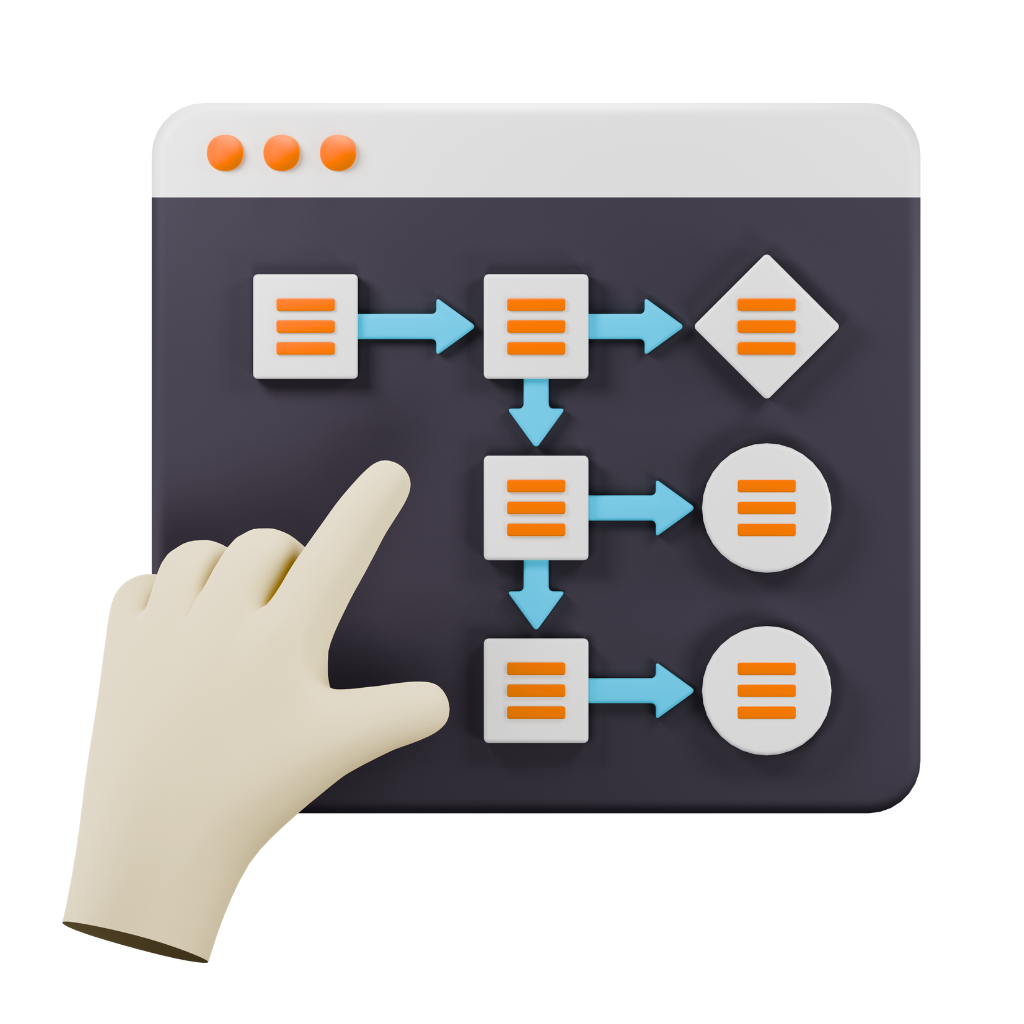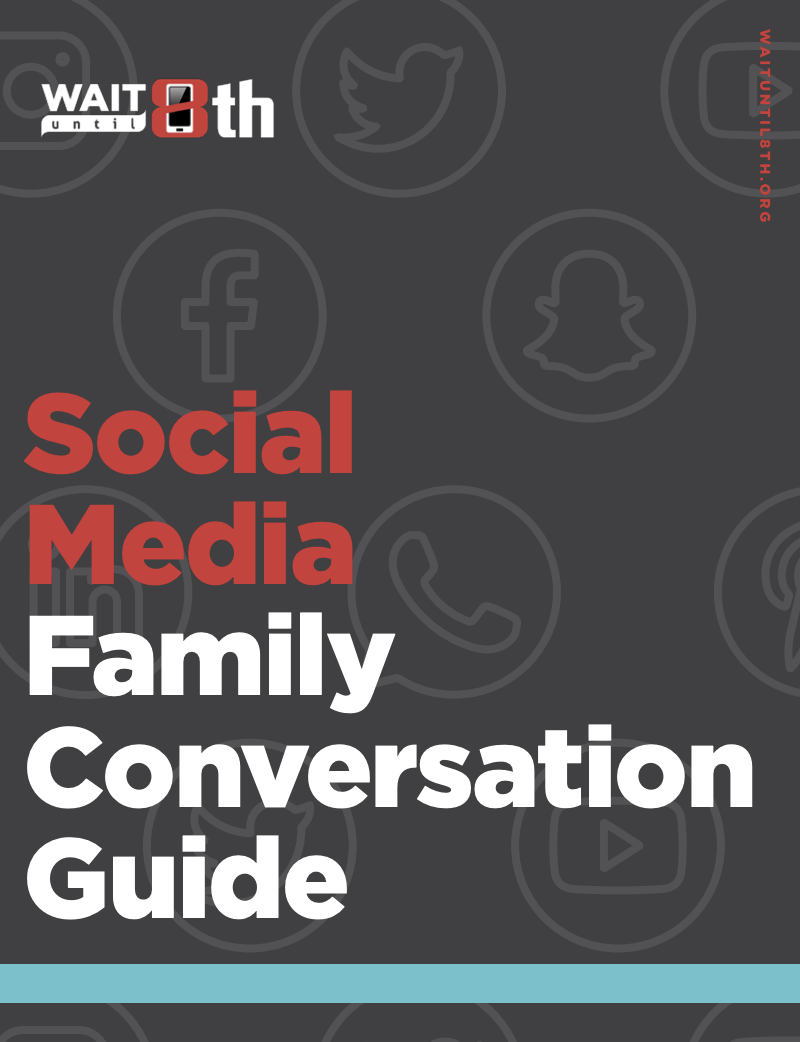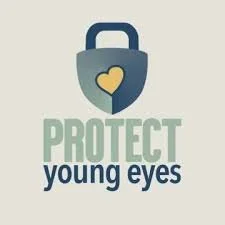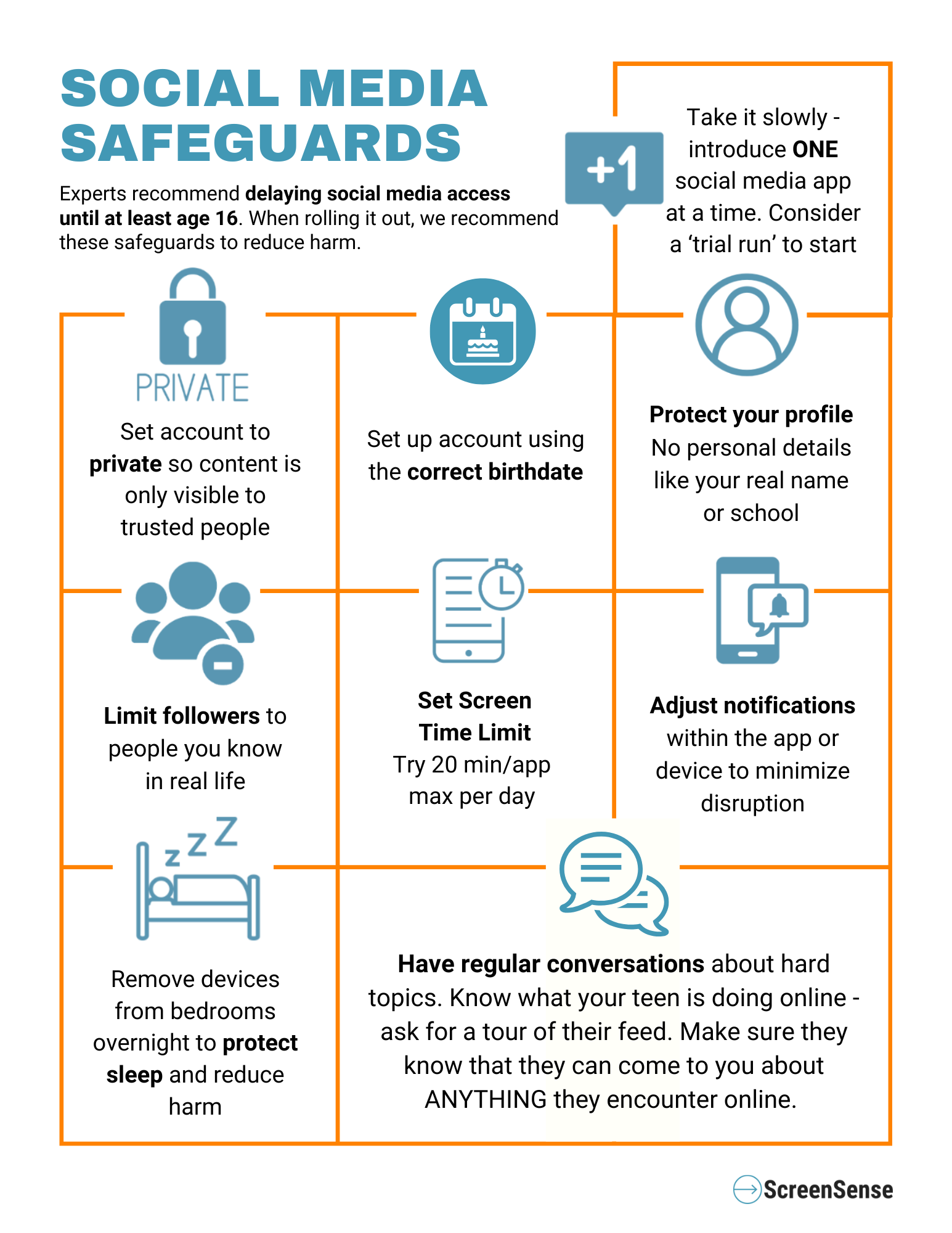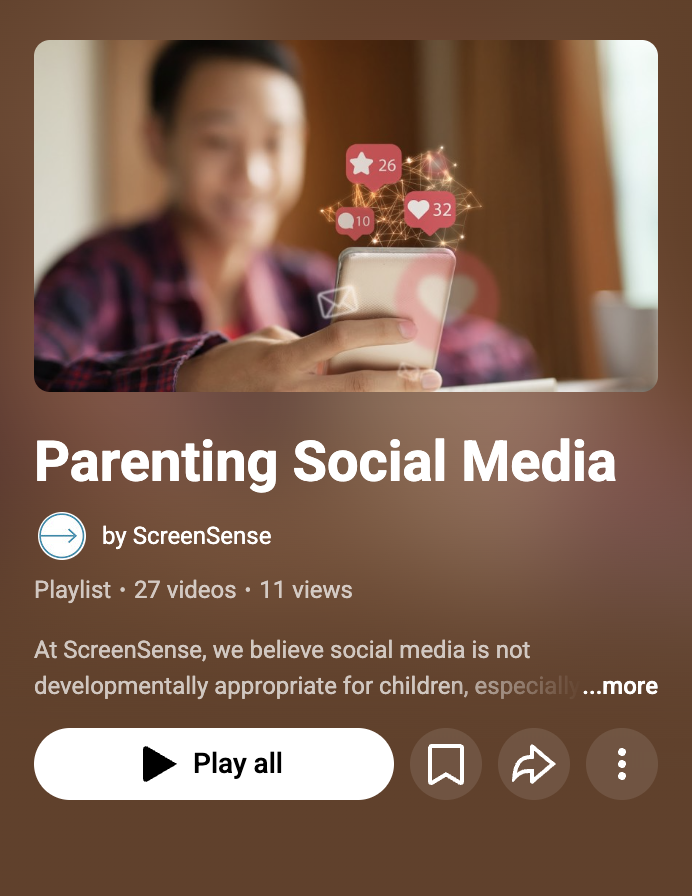
Slowing Social Media
“We cannot conclude social media is sufficiently safe for children and adolescents”
At ScreenSense, we believe social media is not developmentally appropriate for children, especially those in elementary or middle school. We recommend parents hold off until at least high school (ideally age 16) as a harm reduction strategy. This cultural shift needs to be made together - within a local community - in order to reduce the social pressure on parents and kids. Then when the time comes, social media should be rolled out very slowly, with intentional safeguards, time limits, and ongoing conversations.
What is social media?
TikTok, Instagram, Snapchat, Discord, YouTube Shorts…. Social media is the collection of apps and websites that kids and teens often use to connect, share, and explore. From posting photos and videos to messaging friends or following interests, these platforms have become a big part of how young people socialize today. While social media can offer creativity and perceived connection, it can also come with major challenges like distraction, pressure, and exposure to inappropriate content. Its frictionless design means time spent on social media easily crowds out other important childhood activities. Being informed about social media helps parents guide their children safely in the digital world.
Why are we concerned about social media?
Social media is a mixed bag. You can't get the upsides (of connecting, learning, and entertainment) without the downsides. And unfortunately the downsides are impacting childhood in irreparable ways. As a parent or caregiver in this digital age, it is your responsibility to know the downsides of any device, app or software you allow your child to use. Social media content is unregulated - unlike public television which must adhere to safety and age-appropriate standards. Social media platforms are viewed by law as “intangible services” not “products” - so they are also not subject to the same consumer safety regulations as toys, cars, and other products.
95% of teens in the US use social media.
1 in 3 teens reports they use social media “almost constantly”
3+ hours per day on social media doubles the risk of depression and anxiety
In addition to the opportunity costs of spending time on social media instead of other activities that promote healthy youth development, studies also show that social media can take a toll on teens’ well-being, mood, sleep, focus, and safety. Understanding these risks helps parents guide healthier use.
Potential Harms According to Research
Mental Health Impacts
Increased anxiety and depression: heavy use is linked to higher rates of mood disorders, especially among girls.
Social comparison & low self-esteem: Teens often compare themselves to curated, unrealistic posts.
Addictive design: infinite scroll, likes, and notifications are engineered to keep teens scrolling and coming back for more.
Sleep Disruption
Late-night scrolling leads to less sleep and poorer sleep quality.
Notifications and fear of missing out (FOMO) make it hard to look away or “turn off”.
Sleep loss is tied to worse mental health, attention, and mood.
Exposure to Inappropriate Content
Violence, sexual content, hate speech, and harmful trends are widespread.
Algorithms often serve extreme content to boost engagement.
Parental controls are often inadequate.
Contact from Strangers
Direct messaging features can allow unwanted contact from bad-acting adults or peers.
Kids and teens are often targeted for scams, grooming, or harassment.
Social Pressure & Cyberbullying
Social media amplifies peer drama and exclusion.
Cyberbullying can happen 24/7 - with wider audiences and lasting effects.
Teens may feel pressure to maintain a “perfect” online persona.
Distraction & Academic Impacts
Constant notifications fragment attention and reduce quality study time.
Heavy social media use is linked to lower academic performance and attention problems.
Privacy & Digital Footprint
Personal information can be collected, shared, or misused.
Posts made in teen years can follow them into adulthood.
Delay social media as long as you can
“Only allow your child on social media when you’re ready for them to interact with porn, violence, and drug dealers on the regular.”
-Amy Neville,
Oct 2025, at a San Francisco screening of the film, Can’t Look Away
Protecting your child from the risks of social media starts with delaying their first exposure. Young brains are still developing, especially areas that control attention, impulse, and emotional regulation, and early access to highly engaging platforms can make it harder for them to focus on school, hobbies, and in-person friendships. Waiting also helps safeguard sleep and mental health, reducing risks of anxiety, depression, and negative body image. It allows children more time to build real-world skills and relationships through face-to-face interactions, creative play, and extracurricular activities. Delaying social media also minimizes early exposure to cyberbullying, peer pressure, and inappropriate content, while giving kids a chance to develop healthy habits. By waiting, parents help children enter social media when they are older and ready with the maturity and skills to navigate it more safely and responsibly.
There’s no proven “right” age to allow social media, but there’s growing consensus on when NOT to: elementary and middle school are too early. Delaying until high school greatly reduces harm related to mental health, sleep, focus, and physical safety.
Dr. Vivek Murthy, the former US Surgeon General, recommends delaying social media use until a child has at least finished middle school - he says age 13 is too young for social media. In his book The Anxious Generation, Social Psychologist Jonathan Haidt recommends delaying social media until age 16. Common Sense Media says TikTok and Instagram are not age-appropriate until age 15, and Snapchat until age 16. Psychologist Lisa Damour advises that your child is only ready for social media when they have neurologically developed skepticism (around age 14+) and when (metaphorically) you’d be ready for them to attend a wild unsupervised high school party where they’d have to navigate lots of tricky situations. Meanwhile, the American Psychological Association (APA) - who published a health advisory on social media use, is unwilling to give a minimum age because they are not even sure if there is an age after which kids can use social media safely. The APA concluded,
“There are no data available to indicate that children become unaffected by the potential risks and opportunities posed by social media usage at a specific age…. In general, potential risks are likely to be greater in early adolescence—a period of greater biological, social, and psychological transitions–than in late adolescence and early adulthood.”
Exploring social media with your child can be a delay tactic.
If you find that your child is feeling socially left out by not having access to Snapchat, Instagram or TikTok, you can find small ways to give them a taste of social media content without allowing a full-fledged account with unfettered access. You can explore TikTok together or let them play with Snapchat filters on your phone. You can create a private family Instagram account and create content together or let them “manage” the account. This will give them enough knowledge so they don’t feel completely clueless with peers and it buys you some time. It also helps you to understand how they want to use the app.
“Your feed doesn’t reflect what you search for but what you spend time on”
- Charles Bahr (former TikTok employee in Can’t Look Away film.)
But what if - as a parent - you are someone who doesn’t use social media? We recommend you roll up your sleeves and learn about the app(s) your child is interested in. Pick one app with your child and try it out together. Invite your child to join you while you poke around and learn about it - they’ll be delighted and will feel validated! They may even teach you something! This is a great way to talk about some of the content you’re seeing together and provide some context or values around it. Keep in mind that the content fed to you as an adult won’t be the same as what your middle schooler might see if they had their own account. But this process will give you a good sense of how the app/platform works so you can make an informed decision about if and when to allow it.
Delaying social media with other families is key!
Social media has created an impossible situation for parents: either we allow social media and its known harms, or we don’t allow social media and our kids are left out of the social circle. Delaying social media alone is too hard - this is such a social beast. Finding common ground in this dilemma and agreeing to delay social media together as a community is our solution. It’s much easier to hold the line together. Parents agreeing to delay social media together reduces the social pressure on kids and parents. If none of the 7th graders have Snapchat, no one feels left out. So think about who is in your hyper-local community - maybe it’s your child’s grade or class or friend group - and gather other parents to find common ground and help each other take the pressure off. We need to normalize talking about tech with each other!
Understanding the Algorithm.
Everyone talks about the algorithm…but what is it really?
You can think of social media like a giant TV network, but instead of showing the same show to everyone, it uses a computer program—called an algorithm—to decide what each person sees. The algorithm watches what your child follows, likes, comments on, or lingers over, and then shows more of the same type of content to keep them engaged.
GIVE THIS A TRY!
Search for content about “X” (where X = any topic of interest) on TikTok or Instagram.
Then review what content results.
Discuss what content relates to X topic.
What comes up that isn’t about X?
What happens if you linger for a long time over unrelated content?
In all likelihood, you’ll get more of that unrelated type of content in your feed.
This is a good way to discuss how social media algorithms work - they want to keep you on for as long as possible, so they feed you content that you spend more time on, not what you’re searching for.
Ready to allow social media? Take it very slowly.
If you feel informed about the downsides, feel your teen is ready to safely navigate exposure to these many downsides, and believe your teen would come to you for help when tricky situations arise, then it might make sense to consider saying yes to a social media app.
When you open the door to social media, it’s really important to be open and honest with your teen about what you view as the upsides and downsides, what your concerns are, and how you’d like to work together to keep them safe and balanced. Also, at the point when you are providing access, this is when their ears will be widest open to your limits and rules - so take your time and set the boundaries while you have their focused attention. Explain to your teen that you need to work together to keep them safe and healthy online. By inviting them into the process with you, they might just be more amenable to your rules!
A really helpful tool to guide this process is the Social Media Conversation Guide by Wait Until 8th - we have found that if you print it out and read through it with your teen or have them read it independently, it makes these conversations easier because it’s not just coming from you.
Make sure to let the line out really s-l-o-w-l-y. The goal is to provide a long on-ramp where you’re coaching your teen to develop a healthy, balanced, and intentional relationship with social media (as much as that’s possible!) so that at one point they can manage it on their own. They have a lifetime to consume social media content so spend a lot of time introducing social media - talk about healthy tech use, implement our suggested safeguards (see below), regularly check in on how they’re using the app, and make course-corrections as needed. It’s messy ongoing work, but you’re the most qualified person to do this.
Need help navigating apps and devices? We highly recommend Protect Young Eyes — it’s packed with tips and strategies for keeping kids safe online.
A really good way to slow things down is to only introduce ONE social media app at a time. If your teen wants several of these apps, have them prioritize and pick one to start with. Consider starting with a trial period where you give them access for a week or two and see how it goes. Implementing trial periods for any kind of tech device or software is one of our go-to suggestions for parents.
The safeguards below will help you get started with some basic ground rules, and then from there, parenting a teen who’s on social media is a very iterative process with lots of check-ins, regular conversations, and adjustments. Proceed with caution!
Modeling Social Media
The best way to teach healthy social media habits is to model them yourself. By posting mindfully, interacting respectfully, and managing your own screen time, you show kids how to make thoughtful choices online. Being transparent about your decisions and openly discussing consequences helps them see that social media can be fun while still respecting boundaries, privacy, and offline life.
Show mindful posting
Think before you post or comment. Talk through why some posts are helpful, kind, or appropriate - and why some aren’t.
Demonstrate respectful interactions
Model positive online behavior: responding calmly, avoiding drama, and not oversharing personal information.
Set limits visibly
Let them see you pause notifications, take breaks, or log off intentionally.
Discuss consequences openly
Share examples of good and bad online choices and what happened.
Balance fun and responsibility
Show that social media can be entertaining, but can you pull you in and that offline life matters too.
Be transparent about how you are choosing to post and why
Parenting a child who’s on social media? Start here.
So your child, tween or teen uses social media. One app or maybe all of them. It’s ok - that’s been the norm! It’s also ok to pause and regroup. Ask for a tour of their social media account(s) so you can check in on what they’re seeing and doing. Or ask them how it’s going and what they like/dislike about a social media app they use. Also take a look at how much time they’re spending on social media apps and have an open discussion about balance and agree on appropriate time limits. Think of yourself as their coach and accountability partner who is guiding them towards healthy habits and prompting course-corrections when needed.
For elementary aged kids.
If you have a younger social media user, it’s more straight-forward to explain your newfound concerns and remove all social media apps. After all, you’re the parent and you get to set the rules and limits. Be honest about why you’ve changed your mind - that it’s about keeping them safe - and remind them that social media isn’t age-appropriate yet or essential to their social life.
Elementary School Reset
The elementary years are the time to protect kids from social media.
If it’s already in the mix, you can remove it and start fresh — it’s never too late to make a positive change.
Remove all social media apps [TikTok, Instagram, Snapchat, Discord, YouTube].
Set up correct Parental Controls:
For Android devices see this page for guidance: Google Family Link
For iPhones and iPads see this page for guidance: Apple Screen Time
Apply across all devices: phones, tablets, Switch, Smart TVs, laptops.
Disable the internet browsers and remove App Store access.
Require permission for YouTube or browsers — treat them as earned privileges.
Other Settings to help:
| Feature | Apple | Android |
|---|---|---|
| Web Filtering | Screen Time → Content Restrictions → Allowed Websites Only | Family Link → Filters on Chrome → Approved Sites Only |
| App Age Limits | Screen Time → App Store → Don’t Allow 12+/17+ Apps | Family Link → Controls on Google Play → Set Age Limits / Require Approval |
| Manage all devices | Family Sharing | Family Link (one dashboard for all devices) |
For tweens and teens.
As kids get older, you need to shift to a more collaborative approach that acknowledges their growing need for agency. New tactics might include suggesting experiments, mini challenges, or app detoxes - e.g., “how about you delete this social media app from your phone for one week, see how it feels, and let’s talk.” It also becomes more effective to take more of a team approach - e.g., “let’s both delete this app from our phones and share our observations.” Help your teen see that you’re both on the same team, facing similar challenges, and that you can help each other stay accountable to your intentions.
Be their coach.
The safeguards above are worth revisiting if you missed them earlier. After recommitting to basic ground rules, parenting a teen who’s on social media is a very iterative process with lots of check-ins, regular conversations, and adjustments. They’ll ask for more, you’ll make compromises, they’ll slip up, you’ll adjust their limits, and your child will test the boundaries. If it feels like messy ongoing work, then you’re doing your job. No safeguards are foolproof so your best tool is open and honest conversations. A really helpful tool to guide a check-in conversation is the Social Media Conversation Guide by Wait Until 8th - we have found that if you print it out and read through it with your child, it makes these conversations easier because it’s not just coming from you. The most important thing you can do is create an environment where your teen knows that they can come and talk to you about anything - without fearing judgment, ridicule, shaming or punishment.
Inevitably, tricky stuff is going to come up. A stranger is very likely to contact them online at some point. Make sure they know you’re there for them. You can say, “If something goes wrong, I want to know that you are going to come to me.” Or you can say, “I trust you, but I don’t trust the internet.” Make sure they know that you won’t freak out and reactively shut down all tech if something goes wrong - that’s a top reason why tweens and teens don’t tell their parents when things go wrong.
“A combination of social media limits and boundaries AND adult-child discussion and coaching around social media use leads to the best outcomes for youth”
-APA’s Health Advisory on Social Media Use in Adolescence, 2023
As you find your way on this bumpy journey, trust your parenting instincts - if you’re worried about something, you probably have a good reason. It may indicate it’s time to check in or revisit how tech use is going. You can always have your teen take a break - maybe remove social media from their device for a week and review how everyone feels, what changes as a result, and rethink how to bring it back better (or move on without it). You’re never going to land on perfection - there’s no such thing - this is the wild west, and you’re doing the best you can.
Our two main concerns in the digital age are that our kids use their time well and that they stay safe. Think of these as your two swimlanes while parenting your kids’ use of technology. You want to help them discover what fills up their bucket and make sure tech doesn’t get in the way of their goals and values - this takes a lot of nudges and course-correction because tech is so sticky and relentless. You also want them to use tech well - so be curious about what they’re doing online and help redirect them when needed.
Reel it in when needed.
Before setting new limits, start by getting clear on what’s really happening. The goal is to understand, simplify, and structure - not punish. Take a close look at how your child is using their device, what apps are taking their time, and whether those apps serve connection or just consumption. Once you have a clear picture, you can clean up what’s not helping and put healthy structure in place.
Reel It In
If you are concerned about how your child is navigating social media apps and you want to make a change, it’s never too late to reel in social media use. Use these suggested strategies to reel in use, reduce harm, and reclaim your child’s time and attention for in-real-life hobbies, passions and connection.
1. Investigate
Check what apps they use and why - entertainment, connection or something else?
What are they doing on social media apps and with whom?
Check Screen Time data and usage, see where they spend their time and what time of day.
2. Tackle One Issue at a Time
First identify what is most problematic (eg, insufficient sleep? Too much time on TikTok? Never goes outside?)
Then focus on this one area first.
Talk with your child about why a change is important—they’re more likely to cooperate when they understand. Get their input on possible solutions.
3. Protect Sleep as the Top Priority
Set device-free routines at night.
Set up DownTime for your child using the device controls
For Android devices use Google Family Link
For iPhones and iPads use Apple Screen Time
Schedule WiFi or cell phone downtime, create a charging station outside their bedroom, or take possession of devices if needed.
For T-Mobile use Family Mode
For AT&T use Smart Home Manager
For Verizon use Verizon Family
Sleep is the foundation for healthy habits.
4. Remove Problematic Apps
If your kid’s device isn’t set up right with Family Sharing and Screen Time passcode, fix it first!
Reduce usage by limiting which apps are allowed.
Focus on apps that are particularly distracting or addictive.
Set a limit of ONE social media app and pick the one that is least problematic. Or if your teen has multiple social media apps and you want to scale back, have them pick 1-2 to keep and consider taking a break from the others.
5. Set Time Limits Using Parental Controls
For Android devices use Google Family Link
For iPhones and iPads use Apple Screen Time
6. Encourage Screen-Free Activities
Family meals, board games, outdoor time, hobbies, sports.
Leave out art supplies, books, puzzles, a guitar - make it as easy to fall into offline activities as it is to fall into screens
Be consistent, but not combative.
7. Lead by Example
Share your own struggles: “Here’s what I find hard about social media…”
Honesty and vulnerability builds trust and opens communication with your child.
Narrate your own use and explain the choices you make - both online and offline
Cut back and set limits for yourself as needed to demonstrate how it’s done. Pick up that dusty ukulele instead.
8. Router-Based Internet Limits
Set WiFi off or block devices during bedtime or study hours.
Most home routers allow device-level schedules (Google Next, Eero. Netgear, etc)
Benefits: Works for all connected devices - phones, laptops, tablets, game consoles, Smart Tv’s, etc.
9. Talk to your kids!
Have regular conversations with your tweens/teens! You may feel them push you away, but they need you there.
Encourage reflection & know what they are doing online!
10. Leverage your community
Kids may resist parental guidance but respond to other authority figures better — collaborate with schools, friends, and parent groups.
Connect with other parents to make changes together which makes this all easier!
Favorite resources to share with teens
GIVE THIS A TRY!
If your teen is spending too much time on social media, ask them to co-watch Dino Ambrosi’s Ted Talk with you. It’s 11 min long and highlights how social media may be free, but you pay with your time. After watching, use this screen time calculator and compare your results.
Khan Academy’s Social Media Literacy Course (Free, 8th-12th grades) - Co-developed with the Center for Humane Technology - a course high school students can take to become savvier consumers of social media.
Kids Brains and Screens ($, 4th-12th grades) - A 278-page workbook with lessons and activities to learn how screen use affects brain development and wellbeing. Gives readers the much-needed buy-in to make healthy changes for themselves.
The Social Dilemma (1.5 hours, 2020, ages 13+) - This documentary-drama hybrid explores the dangerous human impact of social networking, with tech experts sounding the alarm on their own creations.
Accountable book (496 pages, 2023, ages 12+) - Author Dashka Slater tells the gripping true story of a racist social media account that changed everything for a group of San Francisco Bay Area high school students.
Gary Turk’s spoken word film, Look Up (5 min)
Teen-approved tools to check out:
To reduce distractions: Clearspace app, Freedom app, Be Present app
The Brick is a small tool that you tap to turn your iPhone temporarily into a “brick phone” - meaning it disables everything that distracts you so your iPhone is a simple tool again.
“Social media is optional” - check out Appstinence website, Substack article, and podcast interview.
If you access social media (e.g., YouTube, Instagram) via a web browser instead of the app, you can customize how you experience it by removing the features that make it a distracting time-zapper. How? By using ReDD, a browser extension that you can customize to your liking.
CHECK OUT OUR YOUTUBE PLAYLISTS!
You can find curated content tailored to educating young people about social media on our YouTube channel.



